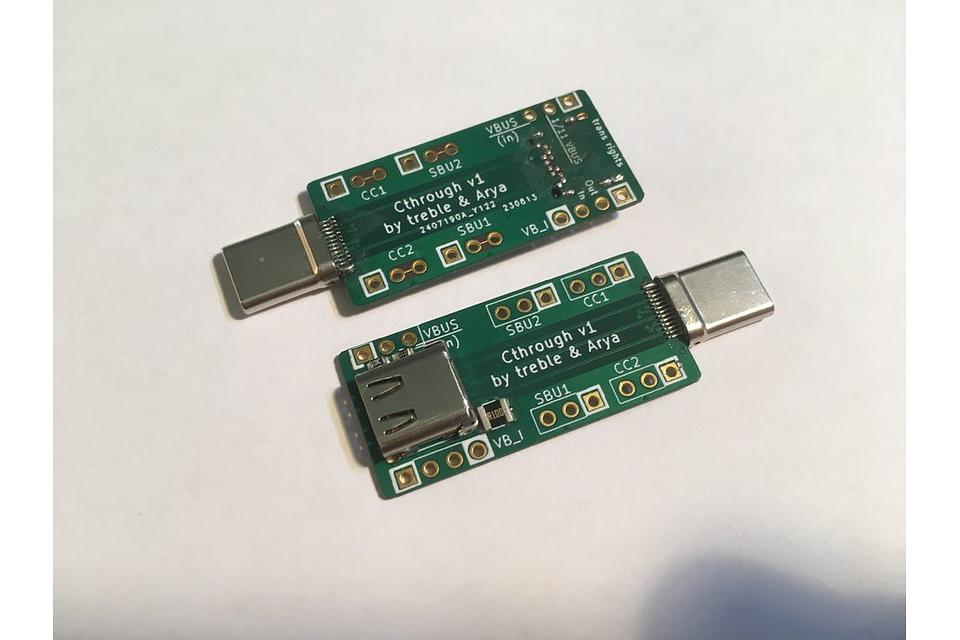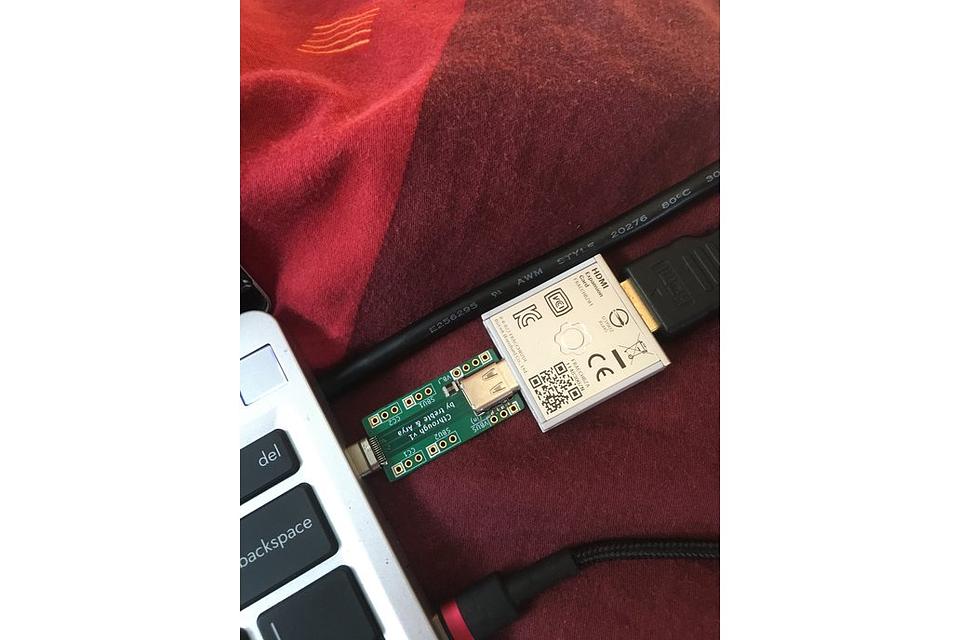USB-CThrough
Sold by Treble's store
$21.90
No tax for United States [change]
Wow, these sold out quickly! I'm going to make a larger batch of improved boards soon - add yourself to the wishlist if you're interested!
What does this board help with?
This passthrough board lets you tap into the connection between the devices, intercept PD negotiations, reverse-engineer proprietary PD-based standards, toy around with the USB-PD protocol, and even debug or stress-test your own PD devices if you set out to build one.
To use this board, you plug it into one of the USB-C devices, between the device and the cable. It works with any kind of USB-C device out there - no exceptions! Because it's a plug-socket board, it's also compliant to the USB-C standard, the board's fully reversible and unlike other boards on the market impedance matching has been taken care of for the high speed signals; all the signals are nicely marked on the board's silkscreen. After you've plugged it in, you can take a multimeter to any of the signals you're interested in, or make use of the numerous features this board has to offer!
For a start, this board has jumper headers for CC and SBU pins - joined with traces by default so that it is ready for you to use without soldering, but the traces are easy to cut if you want to inject your own data. In fact, you can use tin snips or flush cutters to break these traces in a pinch - the board has gaps in the copper so that you can avoid damage to other traces while you cut! Afterwards, if you need to reconnect the traces, you can simply solder a pin header on and plug in a jumper.
If USB-C power is what you're looking at, it also has a microcontroller-friendly output for measuring VBUS - a resistor divider that divides the VBUS voltage by 11, bringing it into range for any 3.3V microcontroller's ADC. Non-divided VBUS signal is also available, and you can draw about an amp (pin header limit) from it in a pinch.
What's more - if you want to also monitor your USB-C device's power consumption, you're in luck! There's a 0.1ohm current shunt inserted into the VBUS connection, which lets you use a current shunt amplifier to monitor your device's power consumption.
In Summary
With this board, you can tap into Thunderbolt, DisplayPort and USB-C EPR (high-voltage) negotiations without any issues! I have designed and tested this board for high-speed interface use, and it's a 6-layer board for that reason. What's more - the PCB design is open-source and can be found on Github!
It's a very powerful debugging tool for USB-C PD development, reverse-engineering and debugging, and I'm glad I can finally offer this to you.



